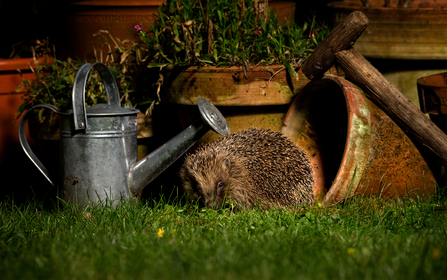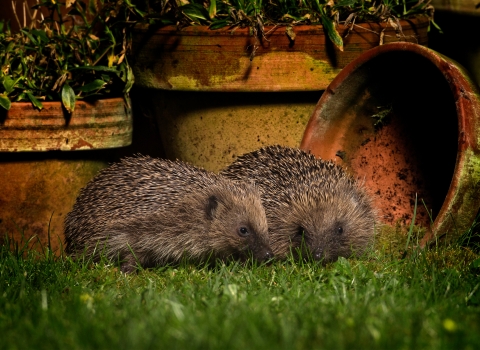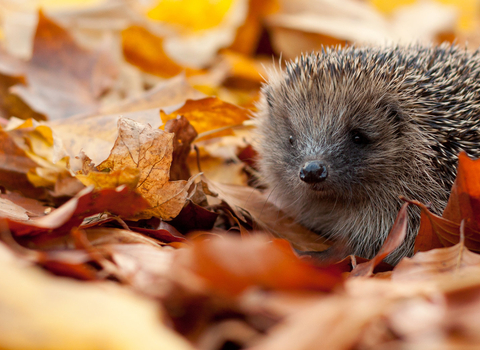The hedgehog loves rough grassland beside hedges or woodland – which is a major reason why they are commonly found in gardens. Gardens can resemble wildlife-rich woodland edges where a hedgehog can forage for those tasty creatures that mill around at ground level, and springtime is when they emerge and begin to seek a mate.
Sadly, our endearing native hedgehogs can struggle to survive in open farmland, due to changes in agricultural practice. Unlike the small, hedge-bounded traditional grazing meadows of yesteryear – full of a variety of juicy caterpillars and beetles – vast, bare, sprayed or reseeded fields, filled from edge to edge with a single crop, are simply not suitable. Also, these small mammals frequently fall victim to modern technology because their defence mechanism is to roll up, keep still and extend their prickles. This works well against all but the most determined predators, but is no use against farm machinery.
Hedgehog declines are often blamed on predatory or competing badgers, but these species have coexisted in Britain over millennia and, like other native prey, predators and competitors, they could carry on coexisting in the countryside. Heavy-handed human interventions just cause new and unforeseen problems.




